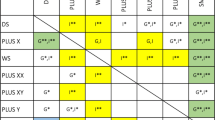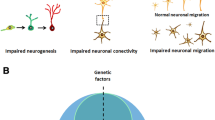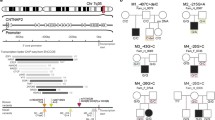Abstract
As a complex neurodevelopmental disorder, autism affects children in three major cognitive domains including social interactions, language learning and repetitive stereotyped behaviors. Abnormal regulation of cell proliferation in the brain during the embryonic period via the TGF-β signaling pathway and TRIM33 gene that encodes a protein with a corepressor and regulatory role in this pathway has been considered as an etiology for autism. Here, we investigated the association of a variation of TRIM33 with autism symptoms at levels of mRNA and protein expression. We used Autism Diagnostic Interview-Revised (ADI-R) and Childhood Autism Rating Scale (CARS) as behavioral diagnostic tools. Normal and autistic children were genotyped for a TRIM33 polymorphism (rs11102807), and then expression was assessed at transcriptional and translational levels. Results demonstrated that the frequency of the homozygous A allele (AA genotype of rs11102807) was significantly higher in children with autism (P < 0.001), whereas carriers of the G allele were mostly among healthy individuals. Children homozygous for the rs11102807 A allele were associated with an increase in CARS and ADI-R scores, indicating a significant correlation with autism symptoms. TRIM33 gene expression at both mRNA (P < 0.01) and protein (P < 0.001) levels was significantly higher in controls compared to autistic children. A remarkable association between higher TRIM33 gene expression at the transcriptional level and lower scores for both CARS and ADI-R was observed in non-autistic children. It seems that rs11102807 modulates the function and expression of the TRIM33 gene, implying that the A allele may increase the risk of autism in children by reducing gene expression and altering the TGF-β signaling pathway.





Similar content being viewed by others
Data Availability
Data are available in the manuscript and upon request.
References
Association AP (2013) Diagnostic and statistical manual of mental disorders (DSM-5). American Psychiatric Pub,
Bozzi Y, Provenzano G, Casarosa S (2018) Neurobiological bases of autism–epilepsy comorbidity: a focus on excitation/inhibition imbalance Eur J Neurosci 47:534-548
Bradford MM (1976) A rapid and sensitive method for the quantitation of microgram quantities of protein utilizing the principle of protein-dye binding. Anal Biochem 72:248–254
Budi EH, Duan D, Derynck R (2017) Transforming growth factor-β receptors and Smads: regulatory complexity and functional versatility. Trends Cell Biol 27:658–672
Canitano R, Pallagrosi M (2017) Autism spectrum disorders and schizophrenia spectrum disorders: excitation/inhibition imbalance and developmental trajectories Frontiers in psychiatry 8:69
Chlebowski C, Green JA, Barton ML, Fein D (2010) Using the childhood autism rating scale to diagnose autism spectrum disorders. J Autism Dev Disord 40:787–799
Courchesne E, Campbell K, Solso S (2011) Brain growth across the life span in autism: age-specific changes in anatomical pathology. Brain Res 1380:138–145
Courchesne E et al (2011) Neuron number and size in prefrontal cortex of children with autism. JAMA 306:2001–2010
Courchesne E, Pierce K (2005) Brain overgrowth in autism during a critical time in development: implications for frontal pyramidal neuron and interneuron development and connectivity. Int J Dev Neurosci 23:153–170
Elsabbagh M et al (2012) Global prevalence of autism and other pervasive developmental disorders. Autism Res 5:160–179
Giulivi C et al (2010) Mitochondrial dysfunction in autism JAMA 304:2389–2396
Glessner JT et al (2009) Autism genome-wide copy number variation reveals ubiquitin and neuronal genes. Nature 459:569–573
Guo J et al. (2017) TRIM33 is essential for osteoblast proliferation and differentiation via BMP pathway J Cell Physiol 232:3158-3169
Huminiecki L, Goldovsky L, Freilich S, Moustakas A, Ouzounis C, Heldin C-H (2009) Emergence, development and diversification of the TGF-β signalling pathway within the animal kingdom BMC Evol Biol 9:28
Jason JY et al. (2017) The autism-linked UBE3A T485A mutant E3 ubiquitin ligase activates the Wnt/β-catenin pathway by inhibiting the proteasome J Biol Chem 292:12503-12515
Jiao Y, Chen R, Ke X, Cheng L, Chu K, Lu Z, Herskovits EH (2012) Single nucleotide polymorphisms predict symptom severity of autism spectrum disorder. J Autism Dev Disord 42:971–983
Kim SJ, Brune CW, Kistner EO, Christian SL, Courchesne EH, Cox NJ, Cook EH (2008) Transmission disequilibrium testing of the chromosome 15q11‐q13 region in autism American Journal of Medical Genetics Part B: Neuropsychiatric Genetics 147:1116-1125
Lecavalier L et al (2006) Validity of the autism diagnostic interview-revised. Am J Ment Retard 111:199–215
Lee SY, Ramirez J, Franco M, Lectez B, Gonzalez M, Barrio R, Mayor U (2014) Ube3a, the E3 ubiquitin ligase causing Angelman syndrome and linked to autism, regulates protein homeostasis through the proteasomal shuttle Rpn10 Cellular and molecular life sciences 71:2747-2758
Marchetto MC et al (2017) Altered proliferation and networks in neural cells derived from idiopathic autistic individuals. Mol Psychiatry 22:820–835
Meyers EA, Kessler JA (2017) TGF-β family signaling in neural and neuronal differentiation, development, and function Cold Spring Harb Perspect Biol 9:a022244
Miyazono K, Kamiya Y, Morikawa M (2010) Bone morphogenetic protein receptors and signal transduction. J Biochem 147:35–51
Nah Y-H, Young RL, Brewer N (2014) Using the Autism Detection in Early Childhood (ADEC) and Childhood Autism Rating Scales (CARS) to predict long term outcomes in children with autism spectrum disorders J Autism Dev Disord 44:2301-2310
Ozonoff S, Heung K, Byrd R, Hansen R, Hertz-Picciotto I (2008) The onset of autism: patterns of symptom emergence in the first years of life. Autism Res 1:320–328
Rodríguez-Martínez G, Velasco I (2012) Activin and TGF-β effects on brain development and neural stem cells CNS & Neurological Disorders-Drug Targets (Formerly Current Drug Targets-CNS & Neurological Disorders) 11:844-855
Rutter M, Le Couteur A, Lord C (2003) Autism diagnostic interview-revised Los Angeles, CA: Western Psychological Services 29:30
Samadi SA, Mahmoodizadeh A, McConkey R (2012) A national study of the prevalence of autism among five-year-old children in Iran. Autism 16:5–14
Sasanfar R, Toloie A (2006) Standardising and normalizing the autism diagnostic interview-Revised on Iranian population The Iranian special education organisation Tehran: The Iranian Special Education Organisation Publication
Schumann CM, Amaral DG (2006) Stereological analysis of amygdala neuron number in autism. J Neurosci 26:7674–7679
Seoane J, Gomis RR (2017) TGF-β family signaling in tumor suppression and cancer progression Cold Spring. Harb Perspect Biol 9:a022277
Straif K, Lawlor D, Unit MIE (2018) Investigating causal relationships between sleep traits and risk of breast cancer: a Mendelian randomization study
Sun Y et al (2019) Target Genes of Autism Risk Loci in Brain Frontal Cortex Frontiers in genetics 10:707
Testa-Silva G, Loebel A, Giugliano M, de Kock CP, Mansvelder HD, Meredith RM (2012) Hyperconnectivity and slow synapses during early development of medial prefrontal cortex in a mouse model for mental retardation and autism. Cereb Cortex 22:1333–1342
Tick B, Bolton P, Happé F, Rutter M, Rijsdijk F (2016) Heritability of autism spectrum disorders: a meta-analysis of twin studies. J Child Psychol Psychiatry 57:585–595
Vorstman JA, Parr JR, Moreno-De-Luca D, Anney RJ, Nurnberger JI Jr, Hallmayer JF (2017) Autism genetics: opportunities and challenges for clinical translation. Nat Rev Genet 18:362
Wagner DS, Mullins MC (2002) Modulation of BMP activity in dorsal-ventral pattern formation by the chordin and ogon antagonists. Dev Biol 245:109–123
Watanabe M, Hatakeyama S (2017) TRIM proteins and diseases. The Journal of Biochemistry 161:135–144
Xia K et al. (2014) Common genetic variants on 1p13. 2 associate with risk of autism Mol Psychiatry 19:1212
Xue J et al. (2015) Tumour suppressor TRIM33 targets nuclear β-catenin degradation Nature communications 6:1-16
Yang Y et al. (2015) Pokemon (FBI-1) interacts with Smad4 to repress TGF-β-induced transcriptional responses Biochimica et Biophysica Acta (BBA)-Gene Regulatory Mechanisms 1849:270-281
Acknowledgements
We thank Dr. Reza Falak for his assistance in this study.
Funding
This work was supported by the Iran University of Medical Sciences (IUMS) [grant number: 26988–87-04–94].
Author information
Authors and Affiliations
Contributions
Research conception and design: Sattar Norouzi Ofogh, Esmaeil Shahsavand Ananloo, Mohammad Taghi Joghataei, Homa Rasoolijazi. Data acquisition: Sattar Norouzi Ofogh, Fatemeh Alizadeh, Zahra Shahrivar. Data analysis and interpretation: Sattar Norouzi Ofogh, Bahman Sadeghi, Ali Bozorgmehr. Figure and schematics preparation: Sattar Norouzi Ofogh, Bahman Sadeghi, Ali Bozorgmehr. Manuscript preparation: Sattar Norouzi Ofogh, Bahman Sadeghi, Homa Rasoolijazi. All authors have read and approved the final article.
Corresponding authors
Ethics declarations
Competing Interests
The authors have no conflicts of interest to declare that are relevant to the content of this article.
Ethics Approval
All procedures performed in studies involving human participants were in accordance with the ethical standards of the APA, institutional and/or national research committee and with the 1964 Helsinki declaration and its later amendments or comparable ethical standards. The study was conducted with informed consent of the participants, and was approved by the Ethics Committee of the Iran University of Medical Sciences, No. IR.IUMS.REC 1394.94–04-87–26988.
Consent to Participate
Cases were recruited from Roozbeh Hospital at Tehran University of Medical Sciences (TUMS). Informed consent was obtained from all participants and their parents or legal guardians.
Additional information
Publisher’s Note
Springer Nature remains neutral with regard to jurisdictional claims in published maps and institutional affiliations.
Rights and permissions
About this article
Cite this article
Norouzi Ofogh, S., Rasoolijazi, H., Shahsavand Ananloo, E. et al. Alteration of TRIM33 Expression at Transcriptional and Translational Levels is Correlated with Autism Symptoms. J Mol Neurosci 71, 1368–1377 (2021). https://doi.org/10.1007/s12031-020-01783-6
Received:
Accepted:
Published:
Issue Date:
DOI: https://doi.org/10.1007/s12031-020-01783-6




